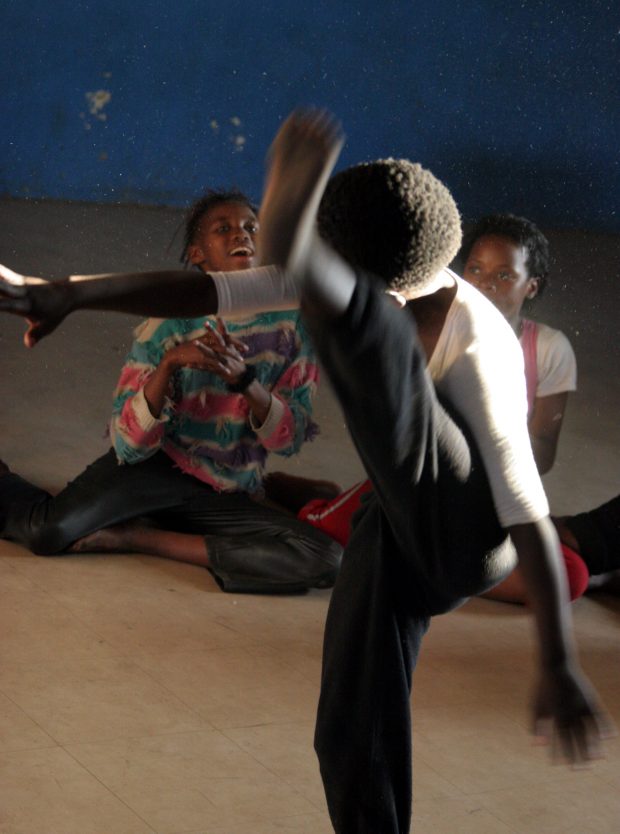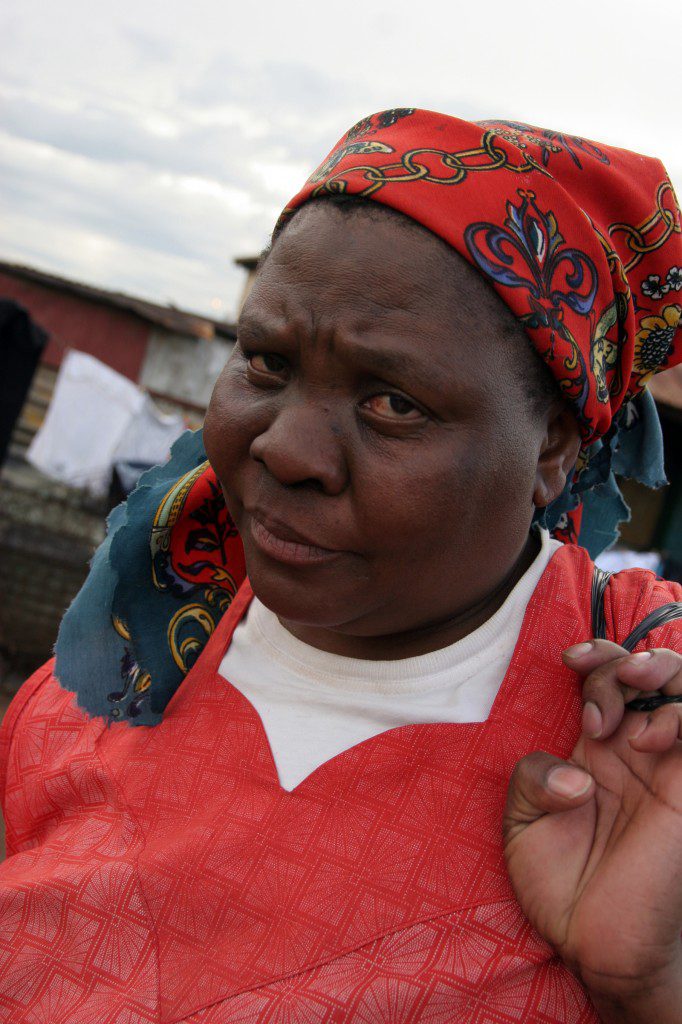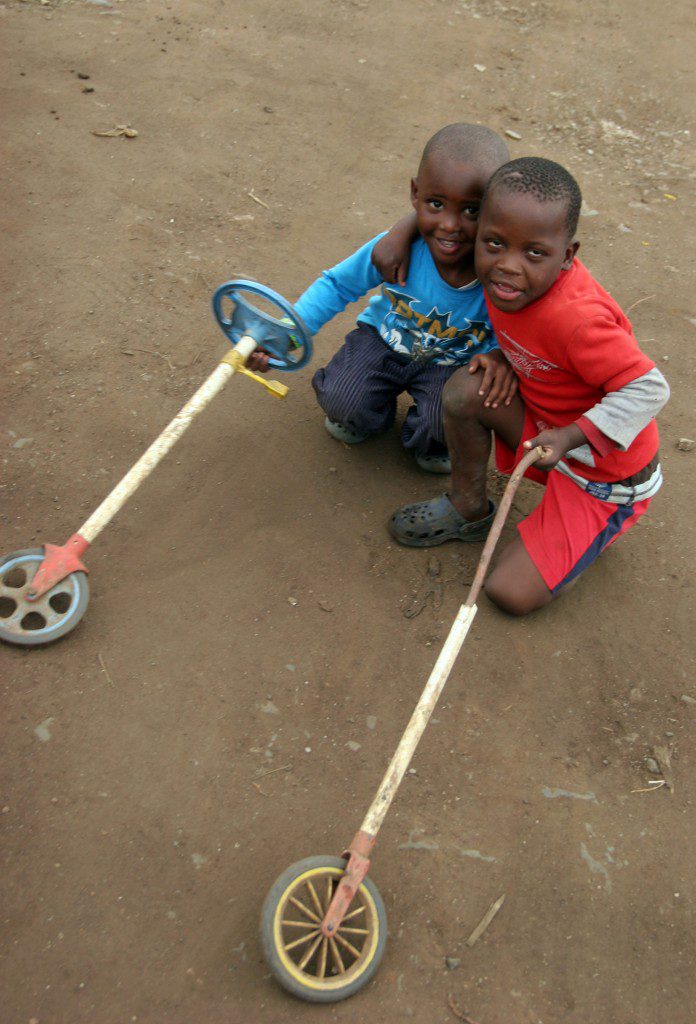Kliptown is the oldest of twenty-five townships that comprise Soweto (an abbreviation for South West Townships), now part of Johannesburg. It was first laid out in 1893 and from 1903 was home to ‘informal settlements’ – squatter camps or shacklands.
In 1955 the Congress of the People – organised by the African National Congress, the South African Indian Congress, the South African Congress of Democrats and the Coloured People’s Congress – took place in Kliptown on what came to be known as Freedom Square (now Walter Sisulu Square) across the railway tracks from the informal settlements. The Congress saw the declaration and adoption of the Freedom Charter, which set out the aims and aspirations of the opponents of Apartheid.
There is now a mixture of permanent housing and a large number of shacks and other informal homes. Kliptown’s present population is officially estimated at between 38,000 and 45,000.
Since my first visit in 2002, there has been little change in Kliptown. There is electricity in some quarters. Earth lavatories have been replaced by chemical toilets but are shared by as many as thirty people and there are still open drains.
Amid appalling deprivation, aspirations run high. A vibrant community is hungry to move out of poverty and alongside images of squalor there are pockets of hope: the girl in her precious school uniform, a requisite to be allowed to attend school, and the woman in traditional Sowetan dress crossing the railway line that divides their lives between opportunities open to the few and the shacklands; the young people who dance every day at the space provided by former street child, Bob Nameng, at SKY (Soweto Kliptown Youth); the enthusiastic response to a poetry project – stringing recycled rubbish to make improvised poetry lanterns organised by volunteers and actors from a theatre across the tracks.
















Such squalor and dignity still living on each others’ doorsteps. The photos of Kliptown are new to my eyes, and to many others. During the apartheid regime “white” people were forbidden to enter the townships, or fraternize with the “black” people. But many saw this as a challenge. Your photos are very vivid. I just can’t take my eyes off the screen. Beautiful work.
Thank you, Doreen, for your appreciative comments as one who has lived through Apartheid and witnessed the poverty and inequality.